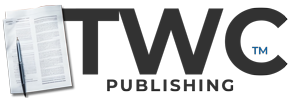Ethical Dilemma at EcoTech Inc.
No Fee
| Case ID: | E-ETD-20230729-1-V1 |
|---|---|
| License: | CC BY-NC-SA 4.0 |
| Pages | 3 pgs |
| Case Study Analysis | Not Included |
| Teaching Notes | Not Included |
| Ai Level | Content co-authored with the OpenAI API |
| Category(s) | Ethics: 9/10 |
This case study explores a pivotal ethical dilemma faced by EcoTech Inc., a multinational eco-friendly tech firm. A discrepancy is discovered in the advertised and actual performance of their flagship product, the EcoTech Solar Charger. Jane Doe, the head of the accounting department, must decide whether to reveal this inconsistency, potentially impacting sales and employee morale, or to stay silent, preserving immediate profits but risking long-term customer trust and legal repercussions. The case underscores the complex interplay of ethics, marketing, and accounting in modern business, demonstrating the challenges of balancing short-term financial gains with long-term reputation and integrity.
Course Categories Rating:
- Ethics: 9/10
- Accounting: 8/10
- Marketing: 8/10
- General Management: 7/10
- Organizational Behavior: 6/10
Weaknesses of This Case Structure:
- Lack of Specific Data: The case primarily consists of a narrative structure and lacks specific, quantifiable data that can be analyzed. Students can derive more valuable insights when real numbers are present, allowing for more nuanced analysis and solutions.
- Character Depth: While the narrative revolves around Jane Doe, we know very little about her. Her professional background, personal values, past decisions, and decision-making style would add depth to the case and make it more engaging.
- Absence of External Environment Analysis: The case does not provide information about the company's external environment (economic, political, social, technological factors) that might affect the decision-making process and the outcome.
- Limited Perspectives: The case is primarily viewed from the perspective of the accounting department. Broader perspectives from marketing, legal, or executive management could enrich the case.
- Narrative Flow: The case jumps from the introduction of the company to the dilemma without providing enough background information about the product in question or the specifics of the aggressive marketing campaign.
Strengths of This Case Structure:
- Relevant Ethical Dilemma: The case presents a genuine ethical dilemma that can stimulate rich discussions about ethics in business, a crucial topic in today's corporate landscape.
- Real-world Scenario: The case scenario is realistic and relevant to many industries, making it relatable and applicable to a wide range of students.
- Clear Conflict of Interests: The case distinctly presents conflicting interests (short-term profits vs. long-term customer trust) which serve to highlight the complexity of business decision-making.
- Multidisciplinary Approach: The case nicely combines aspects of accounting, marketing, and ethics, making it an excellent learning resource for courses that seek to impart a holistic business understanding.
- Stakeholder Analysis: The case acknowledges multiple stakeholders, emphasizing that business decisions can have wide-ranging impacts. This can initiate discussions about stakeholder management and corporate responsibility.





